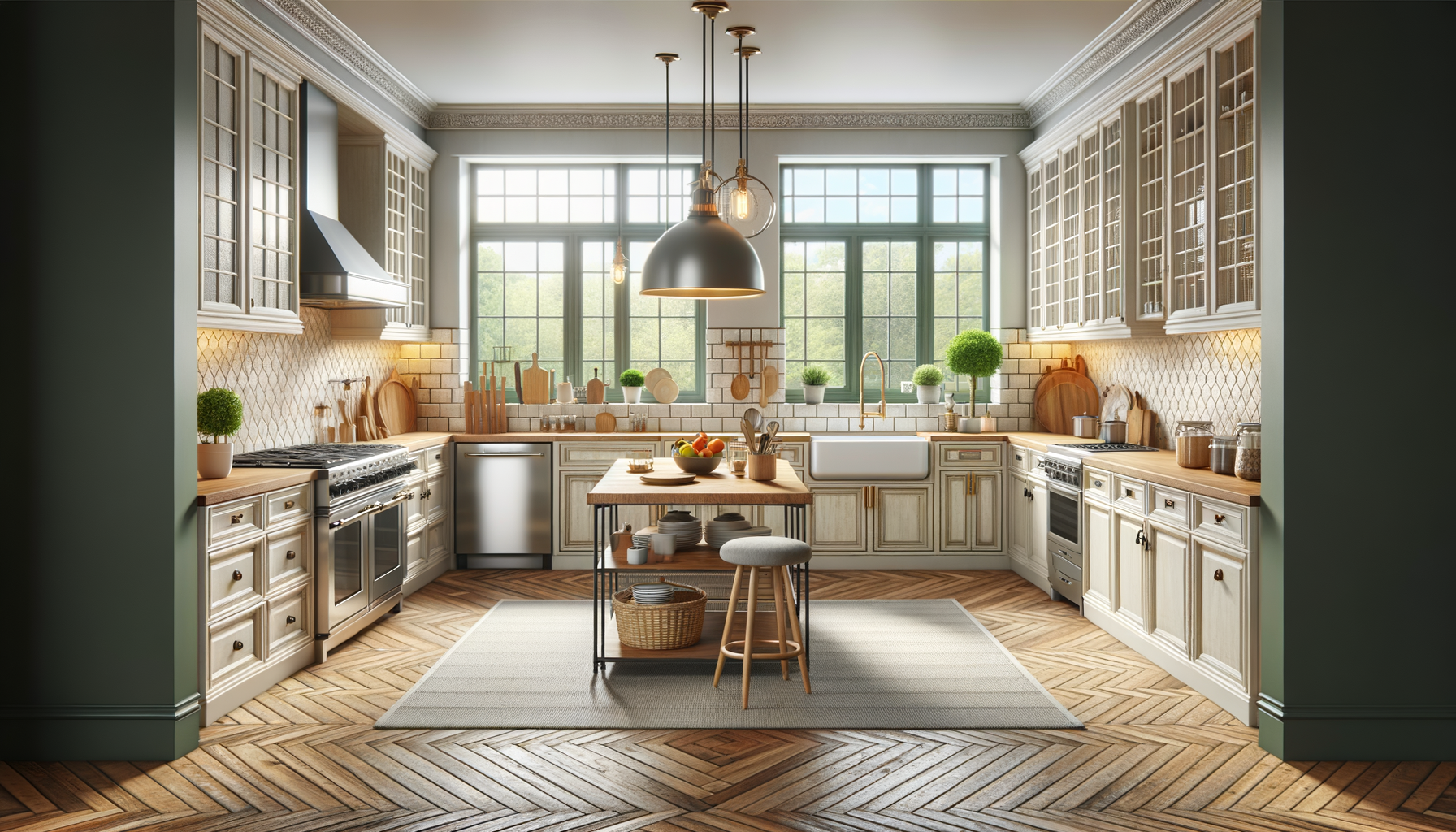Understanding the Need for a Kitchen Makeover
In the heart of every home lies the kitchen, a space that not only serves as a culinary workshop but also as a gathering place for family and friends. Over time, kitchens can become outdated and inefficient, prompting the need for a makeover. A kitchen refurbishment is not just about aesthetics; it addresses functionality, sustainability, and lifestyle changes. The importance of a kitchen makeover can be seen in its ability to improve the overall value of your home, enhance its appeal, and increase efficiency in everyday tasks.
Statistics show that kitchen renovations can yield a return on investment of up to 70%, making it a financially sound decision. Moreover, a well-planned kitchen makeover can significantly reduce energy consumption and waste production, aligning with modern sustainability goals. By investing in energy-efficient appliances and sustainable materials, homeowners can contribute to environmental conservation while enjoying reduced utility bills.
Ultimately, a kitchen makeover is about creating a space that reflects your personal style and meets your specific needs. Whether it’s accommodating a growing family or adapting to a home-based lifestyle, the kitchen should evolve with you. Therefore, understanding the need for a kitchen makeover is the first step towards transforming your culinary space into a vibrant and efficient hub.
Planning Your Kitchen Makeover: Key Considerations
Embarking on a kitchen refurbishment requires careful planning to ensure that the final result aligns with your vision and functional needs. Start by assessing your current kitchen layout and identifying areas that need improvement. Consider factors such as workflow, storage, and lighting, as these elements play a crucial role in the kitchen’s functionality.
Budgeting is another critical aspect of planning a kitchen makeover. Determine how much you are willing to spend and allocate funds for different components such as cabinetry, appliances, and labor. It’s wise to set aside a contingency fund for unexpected expenses that may arise during the renovation process.
Choosing a style that complements the rest of your home is essential. Whether you prefer a modern, minimalist look or a cozy, traditional vibe, your kitchen should reflect your taste. Gather inspiration from design magazines, online platforms, and showrooms to create a mood board that captures your desired aesthetic.
Lastly, consider the timeline for your kitchen makeover. Depending on the scope of the project, renovations can take anywhere from a few weeks to several months. Communicate with your contractor to establish a realistic timeline and ensure that all parties are aligned on the project schedule.
Choosing Materials and Appliances for Your New Kitchen
The selection of materials and appliances is a pivotal part of any kitchen refurbishment. These choices not only impact the kitchen’s appearance but also its durability and functionality. When it comes to materials, consider options that offer a balance of style and resilience. For countertops, materials such as quartz and granite are popular for their durability and aesthetic appeal. Cabinets made from solid wood or high-quality laminates can provide longevity and a refined look.
Flooring is another important consideration. Options such as ceramic tiles, hardwood, and vinyl offer different benefits. Ceramic tiles are known for their durability and resistance to moisture, making them ideal for kitchens. Hardwood floors add warmth and elegance, while vinyl provides a cost-effective and versatile solution.
Appliance selection should focus on energy efficiency and functionality. Look for appliances with high energy ratings to reduce electricity consumption and lower utility bills. Consider the size and capacity of appliances to ensure they meet your cooking and storage needs. Modern appliances also offer smart technology features that can enhance convenience and efficiency in the kitchen.
By carefully choosing materials and appliances that align with your needs and preferences, you can create a kitchen that is both beautiful and practical, ready to serve as the heart of your home.
Incorporating Smart Technology in Your Kitchen Makeover
As technology continues to evolve, incorporating smart features into your kitchen can significantly enhance its functionality and convenience. Smart kitchen technology encompasses a wide range of innovations, from smart refrigerators and ovens to voice-activated assistants and automated lighting systems.
Smart appliances are designed to make cooking and food storage more efficient. For instance, smart refrigerators can help you keep track of groceries, suggest recipes based on available ingredients, and even allow you to view the contents remotely through your smartphone. Smart ovens offer precise temperature control and can be programmed to start cooking at specific times, ensuring perfectly cooked meals every time.
Beyond appliances, smart technology can also improve the overall kitchen environment. Automated lighting systems can adjust brightness based on the time of day or activity, creating the perfect ambiance for cooking or dining. Voice-activated assistants can streamline tasks by setting timers, playing music, or providing cooking instructions without the need to touch any buttons.
By integrating smart technology into your kitchen makeover, you not only enhance the space’s functionality but also future-proof it against evolving technological trends. This investment in smart solutions can lead to a more efficient, enjoyable, and modern kitchen experience.
Maximizing Space and Storage in Your Kitchen
One of the most common challenges in kitchen design is maximizing space and storage. With thoughtful planning and innovative solutions, even the smallest kitchens can be transformed into efficient and organized spaces. Start by evaluating your current storage needs and identifying areas where space is underutilized.
Consider incorporating multi-functional furniture and fixtures that save space while enhancing usability. For example, kitchen islands with built-in storage can provide additional workspace and keep essential items within easy reach. Wall-mounted racks and shelves can be used to store pots, pans, and utensils, freeing up valuable counter space.
Drawer organizers and pull-out shelves are excellent solutions for maximizing cabinet space. These features allow you to easily access items at the back of cabinets, reducing clutter and improving organization. Additionally, consider vertical storage solutions such as tall cabinets and pantry systems that make use of the kitchen’s height.
Finally, decluttering is a crucial step in maximizing space. Regularly assess your kitchen items and remove anything that is no longer needed or used. By keeping only essential items and organizing them efficiently, you can create a kitchen that is both functional and visually appealing.








